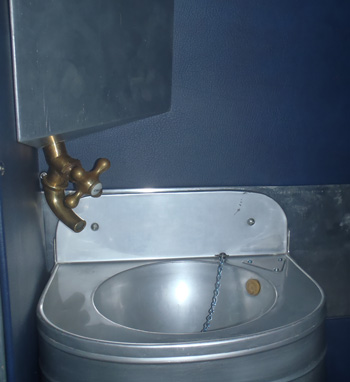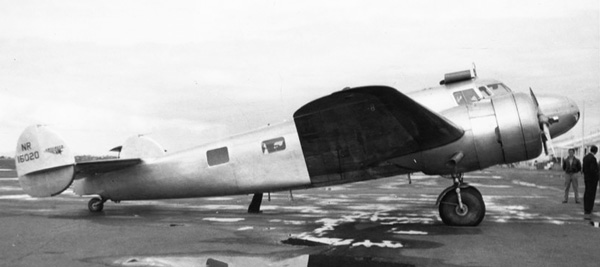 |
October 28, 2014
The Window, the Patch, & the Artifact Is TIGHAR Artifact 2-2-V-1 a piece of wreckage from Amelia Earhart’s aircraft? |
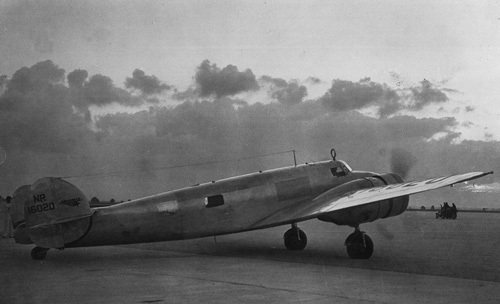 Photo courtesy Miami Herald. |
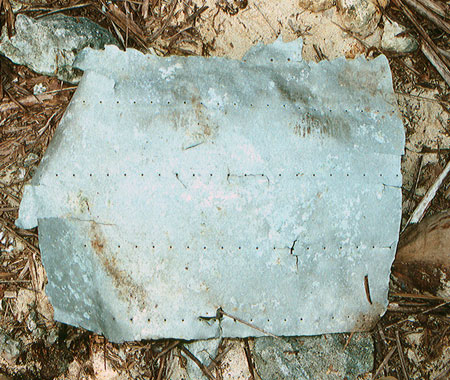 |
Abstract
During Amelia Earhart’s stay in Miami at the beginning of her second world flight attempt, a custom-made, special window on her Lockheed Electra aircraft was removed and replaced with an aluminum patch. The patch was an expedient field modification. Its dimensions, proportions, and pattern of rivets were dictated by the hole to be covered and the structure of the aircraft. The patch was as unique to her particular aircraft as a fingerprint is to an individual. Research has now shown that a section of aircraft aluminum TIGHAR found on Nikumaroro in 1991 matches that fingerprint in many respects.
Background
 |
 |
 |
 |
 |
 |
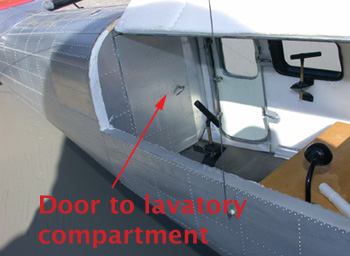 |
|
The place chosen for the starboard–side window was the lavatory at the back of the cabin.
As shown on this photo the interior of Harney’s model, the lavatory compartment encompassed Fuselage Stations 293 5/8th, 307, 320, and 330. Electra fuselage station numbers represent the distance in inches from the tip of the airplane’s nose, so the lavatory compartment was almost exactly three feet long. It was four feet tall, floor to ceiling, by four feet wide.
In the airline version of the Electra there was a sink and water tank on the starboard wall of the compartment. Earhart’s aircraft did not have such amenities – probably only a toilet. This photo shows the sink in the lavatory of Lockheed 10A c/n 1052 at the New England Air Museum.
The special window on the starboard side of the aircraft was larger than the standard cabin windows. The standard windows, Part Number 40552, measured 22 inches wide by 12 inches high. The new window measured roughly 24 inches wide by 18 ½ inches high. Why the window needed to be that particular size is not known, but how the aircraft structure was modified to accommodate the installation is readily apparent — apparent, that is, if you have access to the relevant structures on an actual Lockheed Electra.
Understanding the Structures
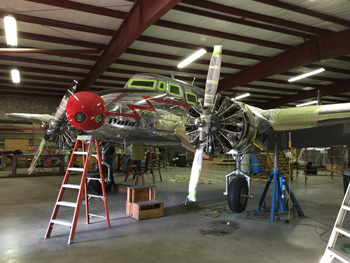
| TIGHAR was fortunate to have such access to Lockheed c/n 1091, a Model 10A being restored to airworthy condition by Wichita Air Services in Newton, Kansas. Originally delivered to the Bata shoe company of Prague, Czechoslovakia in April, 1937, the aircraft enjoyed a long and varied career, eventually ending up in Denton, Texas. Four years ago, the Bata company purchased the aircraft and engaged Wichita Air Services to perform a complete rebuild. The restoration, now nearing completion, included re-skinning 90% of the airframe. In May, 2015 c/n 1091, registered as OK-CTB, will fly to Europe. |
 |
|
|
 |
 |
 |
 |
 |
| On October 7, 2014 TIGHAR Executive Director Ric Gillespie, forensic imaging specialist Jeff Glickman, and aircraft structures expert Aris Scarla visited the aircraft and collected the data and photographs used in this report. TIGHAR video cameraman/producer Mark Smith of Oh Seven Films documented the research. We are indebted to the Wichita Air Services restoration team who generously provided us unlimited access to the aircraft and enthusiastically participated in the investigation. |
Fortunately, the lavatory compartment in c/n 1091 has been restored as a baggage compartment so there is no sink or water tank mounted on the wall.
Looking into the lavatory compartment, this is the area where the special window was installed.
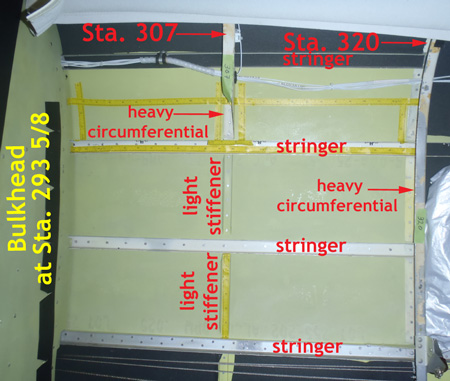 These are the standard structures in the area where the window was installed. These are the standard structures in the area where the window was installed.
|
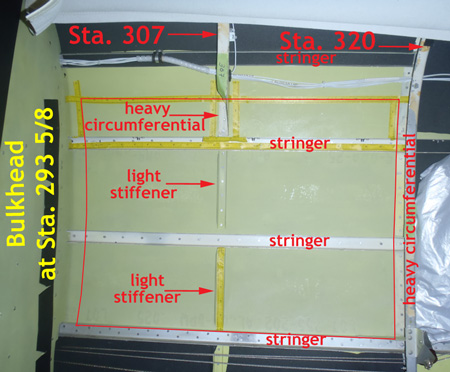
To install the window, it was necessary to cut a hole in the airplane. The red line describes the area to be cut out. |
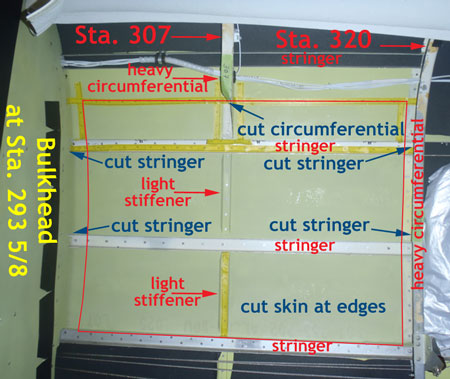 To make the required hole, these are the structures that had to be cut. |
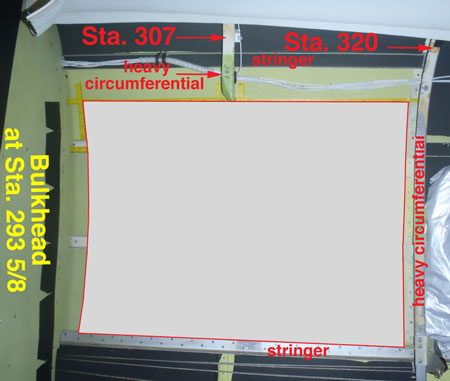 The resulting hole looked like this. |
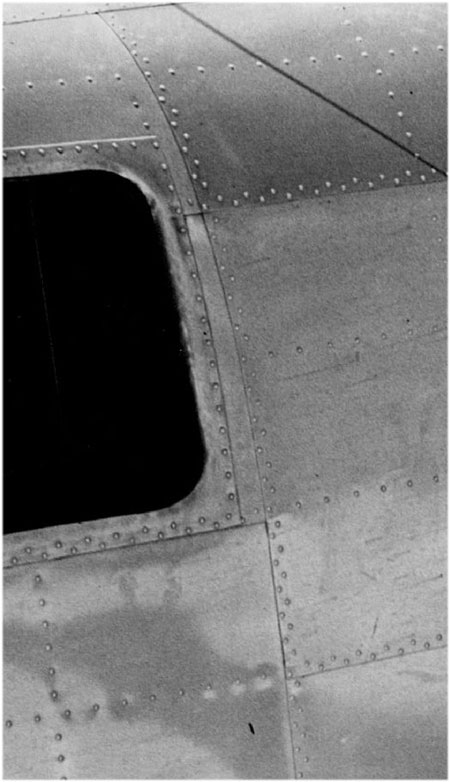 The frame that held the glass or Plexiglas was mounted on the exterior of the aircraft and riveted to underlying structure. The frame that held the glass or Plexiglas was mounted on the exterior of the aircraft and riveted to underlying structure. |
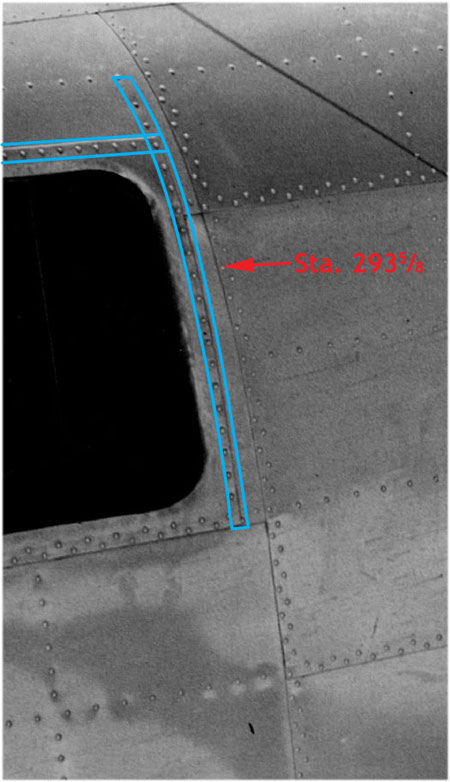
The frame could not be riveted directly to the underlying structure at Sta. 293 5/8 because of the thick lavatory bulkhead on the interior (no way to buck the rivets), so new underlying structure was added just aft of Sta. 293 5/8 to provide something to rivet the frame to. New underlying structure was also added along the top edge of the frame for the same reason. |
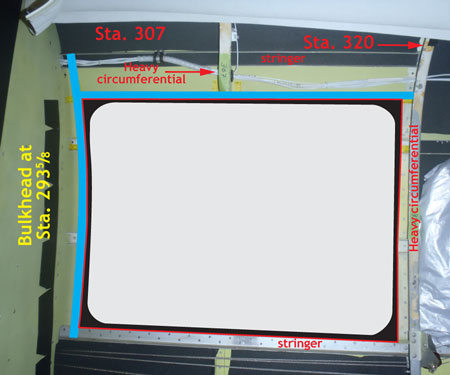 With the frame installed, the interior looked like this. The blue lines show the placement of the new underlying structure. With the frame installed, the interior looked like this. The blue lines show the placement of the new underlying structure.
|
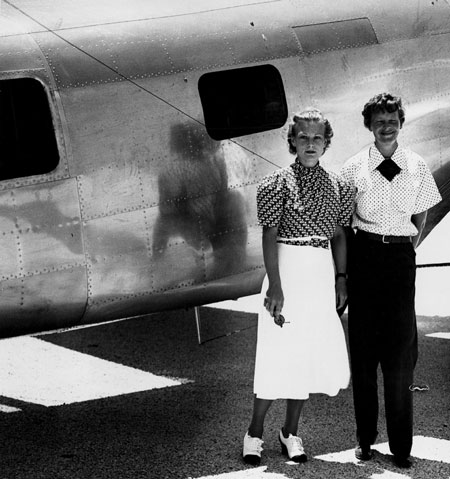 The last photo showing the window in place can be dated to Saturday, May 29, 1937 when Amelia’s step-daughter-in-law Nilla Putnam and her husband David Putnam (GP’s son) visited Miami from their home in Ft. Pierce, Florida. |
Page 1 |
Page 2 |
|
||||||||||
|
|
||||||||||
|









